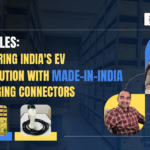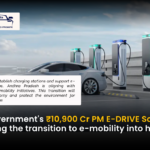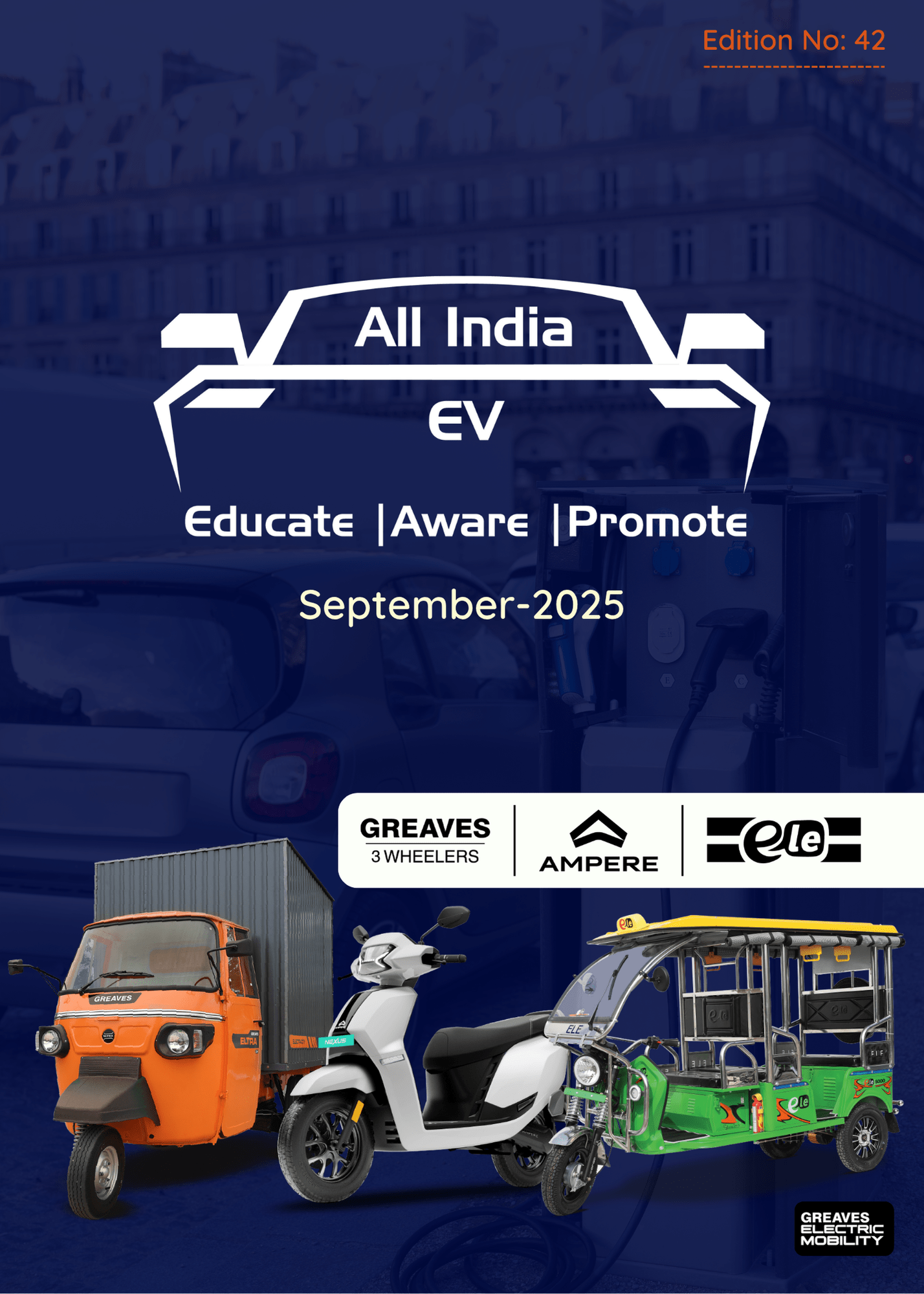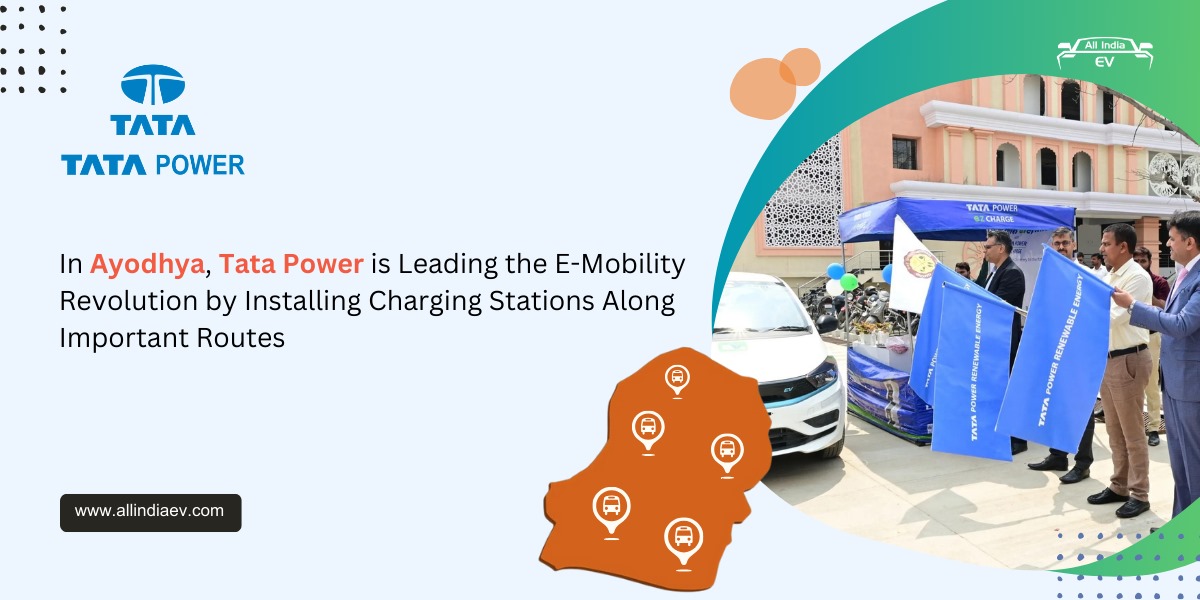
What If Energy Could Transact Like Money?
Author: Akshay Shekhar, Kazam
In a world where sending money is as easy as scanning a QR code, why can’t energy move with the same simplicity and speed? That’s the question the Unified Energy Interface (UEI) is answering, by creating a digital layer for energy that makes transacting power as seamless as paying for a coffee.
Imagine being stranded in an unfamiliar place with a dying EV battery. UEI would help you discover nearby chargers, handle authentication, initiate charging, and complete the payment, all in one fluid process. Or suppose you’ve installed rooftop solar panels and generated excess power. Instead of letting it sit unused, UEI lets you sell that surplus to someone nearby who needs it, monetizing every extra kilowatt-hour.
UEI facilitates digital contracts, coordinates commercial aspects of energy exchange, and ensures traceability of every transaction. While electrons still move through physical infrastructure like wires and batteries, UEI is building the software foundation for a more intelligent, flexible energy economy.
It’s built on the Beckn Protocol, an open-source, universal protocol enabling decentralized, interoperable digital transactions across platforms—just like UPI did for payments.
Why Do We Need UEI (Unified Energy Interface)?
Energy is no longer a one-way utility service. It’s becoming a dynamic, two-way system where individuals, businesses, and machines all generate, consume, and store electricity, at different times and places, but are our systems built to handle this complexity?
Let’s look at what’s happening globally:
- The electrification of transport is accelerating. Global EV sales are projected to jump from 10 million in 2022 to 40 million by 2030 (IEA, 2024). EV charging can increase peak electricity demand by 15–40% in urban areas by 2030. Charging behavior is highly unpredictable, varying by location, user habits, and grid tariffs (NREL, 2024).
- In California, EV adoption has already led to 5–10% daily load variability in certain neighborhoods (Stanford University Study, 2023).
- AI and digital infrastructure are putting massive pressure on the grid. Data centers, which currently consume 1–1.3% of global electricity, could rise to 3–4% by 2030 due to AI workloads (IEA, 2024). A single AI model training session can consume up to 1,000 MWh—equivalent to the annual consumption of 120 homes (MIT Technology Review, 2023).
- Demand for cloud and AI inference workloads can fluctuate by 20–30% on a daily basis (Data Center Dynamics, 2024).
- Urbanization is driving long-term electricity growth. By 2050, 68% of the global population will live in cities (UN, 2023), increasing urban electricity demand by 50% by 2040 (IEA, 2023).
- Residential demand is also getting more volatile. Smart appliances and IoT usage can cause 10–25% hourly variability in home electricity consumption (European Energy Agency, 2023).
In short, the demand side of energy consumption is becoming highly variable. Our grids were built for predictable, centralized power flow. What we need now is dynamic coordination across millions of distributed energy assets, EVs, batteries, solar rooftops, and smart appliances, to meet this variable demand.
A news piece released in June 2025 states that India is sitting on 10,380 GW of solar reserves. How do we ensure that that energy is integrated into our present grid and make energy accessible to the existing supply chain? This is where UEI becomes essential.
It’s not just about streamlining EV charging or rooftop solar sales. UEI introduces a common digital layer that helps track, match, and transact energy in real time. It provides a market mechanism for demand response, enabling EV owners, building managers, and prosumers to act based on time-of-day prices, grid needs, or excess capacity.
Without a mechanism like UEI we risk:
- Excess energy from distributed assets remaining underutilized
- Grid operators struggle to forecast or balance dynamic loads
- Consumers have no incentive or interface to participate in flexible energy use
UEI turns every watt into a tradable, accountable, and programmable asset.
That’s why over 20 companies in India, including Kazam, have joined forces under the India Smart Grid Forum to develop and implement UEI. The initiative is guided by Nandan Nilekani and Dr. Pramod Varma, and supported by the Ministry of Power and Department of Science & Technology.
Who Is Working on It?
The UEI project is a coalition of industry, government, and digital infrastructure leaders:
- India Smart Grid Forum and Department of Science & Technology help with convening, policy advocacy, standards, and coordination
- Nandan Nilekani & Dr. Pramod Varma build the vision and digital architecture
- The Ministry of Power provides oversight, national integration, and regulatory support
- Founding Members like Kazam build real-world use cases, co-ordinate with these stakeholders to pilot and deploy scalable solutions.
What are the applications of UEI?
We’ve often heard of UEI in the context of EV charging, acting as a central mechanism for charger discovery and facilitating seamless energy transactions. It eliminates friction from the user experience by replacing multiple apps and incompatible backend protocols with a unified, interoperable layer. Today, over 5,300 charging stations are connected through UEI, enabling more than 13,000 EV charging sessions daily across India.
But beyond EV charging, the applications of UEI are rapidly expanding.
It enables peer-to-peer (P2P) electricity trading, allowing individuals and businesses to exchange energy through a regulated digital framework, with utilities continuing to play a central role in managing grid infrastructure and applying grid usage charges. This supports more flexible energy flows while complementing the existing electricity distribution ecosystem.
In the realm of virtual energy storage, UEI supports monetizing idle batteries, from EVs, homes, or commercial setups by connecting them to the grid, helping balance supply and demand. The UEI Alliance is targeting 1 GWh of aggregated storage over the next five years using such networks.
UEI also plays a crucial role in the integration of renewable energy sources, connecting rooftop solar, wind, and other clean energy assets to the grid. This paves the way for green energy marketplaces, where consumers and businesses can buy or sell renewable power transparently and efficiently.
Furthermore, it unlocks asset monetization and demand response participation, allowing owners of EVs or batteries to sell stored energy back to the grid during peak demand. With its open architecture, UEI encourages innovation and enhances consumer choice, lowering energy costs and enabling a new layer of secure digital economic transactions across platforms.
Think of it like UPI but for energy. The goal is to be able to facilitate energy related transactions across domains, industries, consumers, prosumers, distributors, and everyone in the ecosystem to meet this future demand of energy we are able to estimate from the development we are seeing currently.
Okay we’re saying we’re building UEI to help with energy transactions, but how would that even work?
UEI isn’t a single app or platform; it’s a shared public protocol that lets energy assets, EVs, batteries, rooftop solar, chargers, speak the same digital language. Every transaction starts as a smart contract recorded on a permissioned blockchain. The contract spells out who is trading power, how much, when, and at what price. Think of the blockchain here purely as an audit trail for trust and traceability.
To prove that energy actually moves, UEI relies on DLMS-compliant smart meters and edge IoT devices. When a prosumer (a person who produces and consumes energy) sells power, their electricity meter reports the exact kWh pushed to the grid; the buyer’s electricity meter confirms receipt. Both readings are time-stamped, hashed, and automatically matched, so settlement happens without manual checks.
Instead of rigid APIs, UEI uses an intent-based model. Participants declare what they need or can supply—“charge 8 kWh before 4 p.m.” or “sell 5 kWh from noon to two”. These intents are published to a distributed registry where other nodes discover, negotiate, and close deals on the fly. Utilities stay fully in the loop: they can see every contract, flag issues, or throttle transfers to keep the grid stable, which keeps the protocol compliant with regulations and time-of-day tariffs.
Payments clear as smoothly as the power flows. Funds move the moment a contract is created and are released the instant delivery is verified. UEI supports KYC-verified wallets, UPI rails, and utility billing engines, so energy and money travel together without friction. The whole stack is modular and technology-agnostic—whether a backend runs Hyperledger or Tendermint, or a meter comes from a global OEM or a local manufacturer, UEI’s open schema keeps everything interoperable and future-proof.
The entire infrastructure at the end of the day is being built to address how energy is seen, used, sold, bought, and facilitated through the infrastructure we have today.
As energy demand becomes increasingly decentralized and dynamic, our systems must evolve to match this complexity with intelligence, flexibility, and trust. The Unified Energy Interface (UEI) is not just a technological upgrade, it’s a reimagination of how energy can be transacted, shared, and monetized across India and beyond. By turning energy into a programmable asset, UEI lays the groundwork for a more participatory, efficient, and resilient energy economy, one where every citizen, charger, and kilowatt has a role to play.









